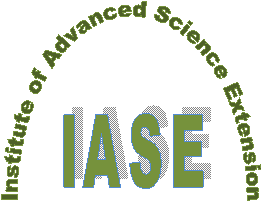International
ADVANCED AND APPLIED SCIENCES
EISSN: 2313-3724, Print ISSN: 2313-626X
Frequency: 12
![]()
Volume 12, Issue 1 (January 2025), Pages: 194-207
----------------------------------------------
Original Research Paper
Japan’s economy and government policies in the post-COVID-19 context
Author(s):
Affiliation(s):
Academy of Policy and Development, Ministry of Planning and Investment, Hanoi, Vietnam
Full text
* Corresponding Author.
 Corresponding author's ORCID profile: https://orcid.org/0009-0008-9403-6560
Corresponding author's ORCID profile: https://orcid.org/0009-0008-9403-6560
Digital Object Identifier (DOI)
https://doi.org/10.21833/ijaas.2025.01.019
Abstract
This research article examines the Japanese government's support policies during the COVID-19 pandemic. The government implemented macroeconomic measures, including monetary and fiscal policies, to mitigate the pandemic's adverse effects and support economic recovery. While these policies achieved certain successes, the Japanese economy continues to face significant challenges, such as slow economic growth, a large budget deficit, and rising public debt, which threaten the long-term sustainability of public finances. Additionally, inflation has exceeded target levels, but workers' wages have stagnated, creating financial hardships for many households. Rapid population aging further undermines the sustainability of the social security system, placing additional pressure on public spending, monetary policies, and fiscal strategies. These challenges complicate Japan's efforts to sustain economic growth and uphold living standards.
© 2025 The Authors. Published by IASE.
This is an
Keywords
COVID-19 policies, Fiscal policy, Monetary policy, Economic challenges, Aging population
Article history
Received 16 July 2024, Received in revised form 20 November 2024, Accepted 9 January 2025
Acknowledgment
We appreciate helpful comments from Prof. Tadashi Yokoyama, National Graduate Institute for Policy Studies.
Compliance with ethical standards
Conflict of interest: The author(s) declared no potential conflicts of interest with respect to the research, authorship, and/or publication of this article.
Citation:
Hung NT (2025). Japan’s economy and government policies in the post-COVID-19 context. International Journal of Advanced and Applied Sciences, 12(1): 194-207
Figures
Fig. 1 Fig. 2 Fig. 3 Fig. 4 Fig. 5 Fig. 6 Fig. 7 Fig. 8 Fig. 9 Fig. 10 Fig. 11 Fig. 12 Fig. 13 Fig. 14 Fig. 15 Fig. 16 Fig. 17 Fig. 18 Fig. 19 Fig. 20
Tables
----------------------------------------------
References (22)
- Ando M, Furukawa C, Nakata D, and Sumiya K (2020). Fiscal responses to the COVID-19 crisis in Japan: The first six months. National Tax Journal, 73(3): 901-926. https://doi.org/10.17310/ntj.2020.3.12 [Google Scholar]
- Chen Z, Marin G, Popp D, and Vona F (2020). Green stimulus in a post-pandemic recovery: The role of skills for a resilient recovery. Environmental and Resource Economics, 76: 901-911. https://doi.org/10.1007/s10640-020-00464-7 [Google Scholar] PMid:32836847 PMCid:PMC7399593
- Deng Z, Li C, Wang Z, Kang P, Hu Y, Pan H, and Liu G (2022). The Russia–Ukraine war disproportionately threatens the nutrition security of developing countries. Discover Sustainability, 3: 40. https://doi.org/10.1007/s43621-022-00112-8 [Google Scholar] PMid:36415866 PMCid:PMC9670081
- Fairlie R and Fossen FM (2021). The early impacts of the COVID-19 pandemic on business sales. Small Business Economics, 58: 1853–1864. https://doi.org/10.1007/s11187-021-00479-4 [Google Scholar] PMid:38624577 PMCid:PMC8009687
- Fu X, Zhang J, and Wang L (2020). Introduction to the special section: The impact of COVID-19 and post-pandemic recovery: China and the world economy. Journal of Chinese Economic and Business Studies, 18(4): 311-319. https://doi.org/10.1080/14765284.2020.1855939 [Google Scholar]
- GoJ (2021). The long-term strategy under the Paris Agreement. Cabinet decision, Government of Japan, Tokyo, Japan. [Google Scholar]
- Hung NT (2022). Experiences of some countries in the world in using fiscal policy for socioeconomic recovery and development after the impact of the COVID-19 pandemic: Lessons for Vietnam. Journal of Financial and Accounting Science, 25: 3-10. [Google Scholar]
- IMF (2021). Database of fiscal policy responses to COVID-19. International Monetary Fund, Washington, USA. [Google Scholar]
- IPSS (2023). Population projections for Japan. National Institute of Population and Social Security Research, Chiyoda, Japan. [Google Scholar]
- JNTO (2023). Japan tourism statistics. Japan National Tourism Organization, Tokyo, Japan. [Google Scholar]
- Kobayashi K (2023). Renew the pact for collaboration between fiscal and monetary policies. Research Institute of Economy, Trade and Industry, Tokyo, Japan. [Google Scholar]
- Lewkowicz J and Woźniak R (2024). Pandemic misery index: How to overcome the effects of the COVID-19 pandemic? Social Indicators Research, 172: 925–946. https://doi.org/10.1007/s11205-024-03335-6 [Google Scholar]
- MOFA (2021a). Japan's initiative toward net zero GHG emissions by 2050. Ministry of Foreign Affairs of Japan, Chiyoda City, Japan. [Google Scholar]
- MOFA (2021b). Intended nationally determined contributions (INDC): Greenhouse gas emission reduction target in FY2030. Ministry of Foreign Affairs of Japan, Chiyoda City, Japan. [Google Scholar]
- OECD (2021). OECD economic surveys: Japan 2021. Organisation for Economic Co-operation and Development, Paris, France. https://doi.org/10.1787/6b749602-en [Google Scholar]
- OECD (2023). OECD economic outlook volume 2023 issue 1: Preliminary version. Organisation for Economic Co-operation and Development, Paris, France. [Google Scholar]
- Pope CG (2023). How inflation affects Japan’s “quantitatively eased” economy. Asian Review of Political Economy, 2: 8. https://doi.org/10.1007/s44216-023-00018-w [Google Scholar]
- Saeed S (2025). The crises in the Middle East: Reshaping the region’s geopolitical landscape and altering the global order. Asian Review of Political Economy, 4: 1. https://doi.org/10.1007/s44216-024-00043-3 [Google Scholar]
- Schäfer D and Semmler W (2024). Is interest rate hiking a recipe for missing several goals of monetary policy—beating inflation, preserving financial stability, and keeping up output growth? Eurasian Economic Review, 1: 235–254. https://doi.org/10.1007/s40822-023-00256-6 [Google Scholar]
- Sodokin K, Couchoro MK, and Tozo KW (2022). Macroeconomic channels of transmission of post-pandemic recovery strategies for African economies. Cogent Economics and Finance, 10(1): 2125656. https://doi.org/10.1080/23322039.2022.2125656 [Google Scholar]
- Wang Z, Cao X, and Ren X (2024). Green development and economic resilience: Evidence from Chinese resource-based cities. Frontiers of Engineering Management, 11: 194–206. https://doi.org/10.1007/s42524-024-0307-3 [Google Scholar]
- Yoshino N, Miyamoto H, and Mumtaz MZ (2020). How monetary and fiscal policy can work against coronavirus shock: Proposal for the issue of corona bonds. Economy, Culture and History Japan Spotlight Bimonthly, 39(3): 54-57. [Google Scholar]

